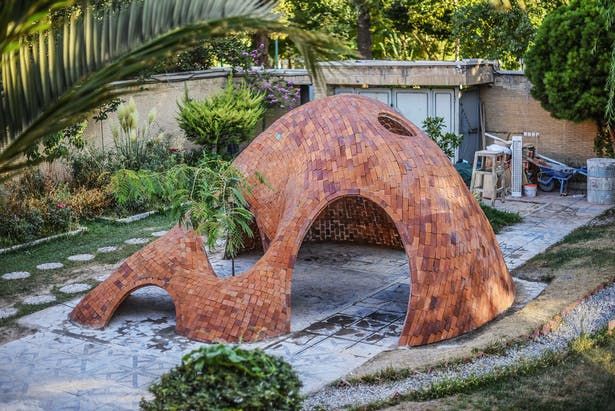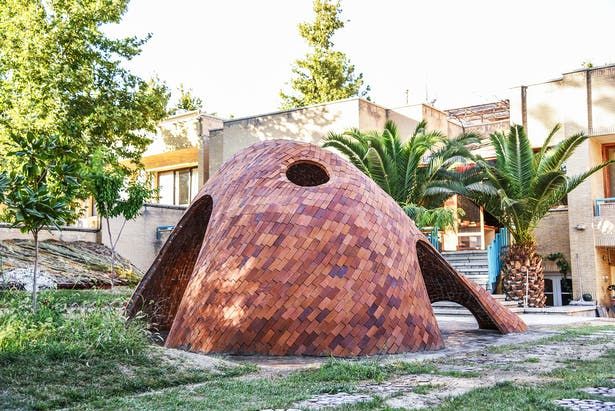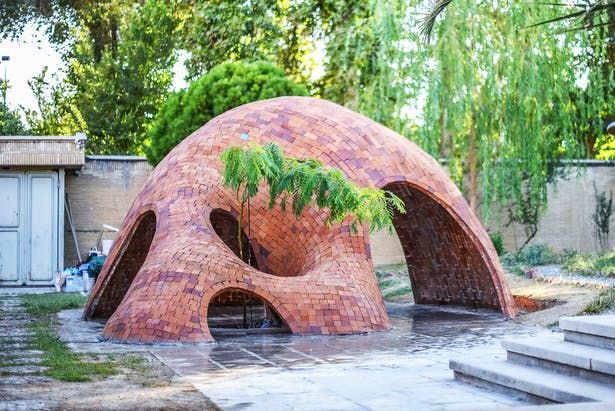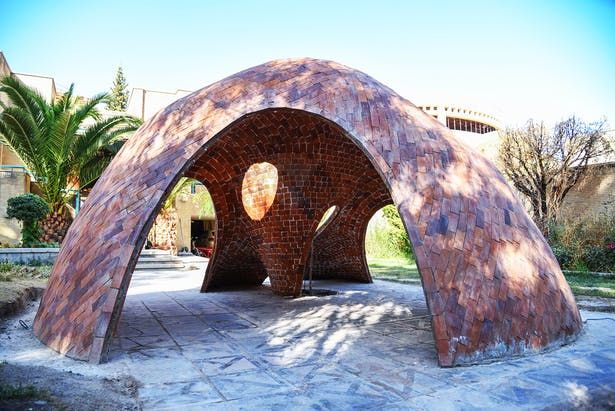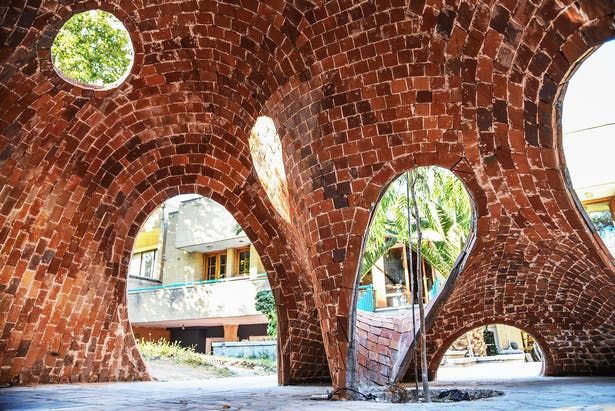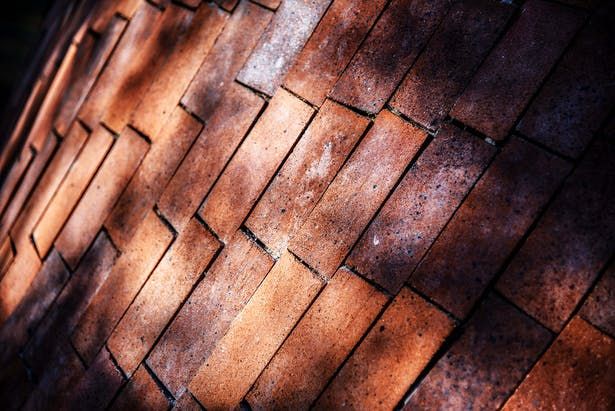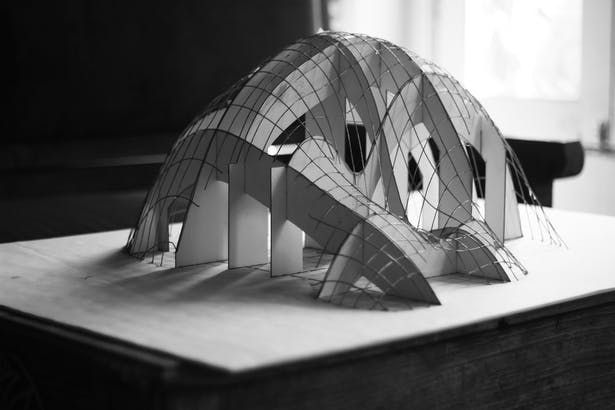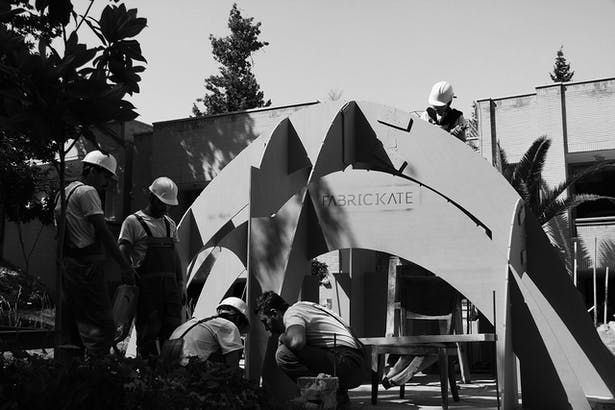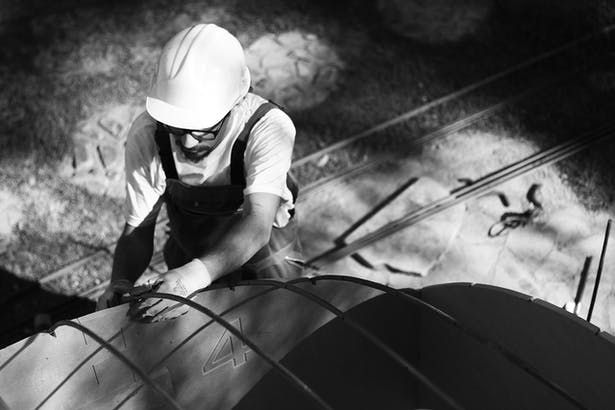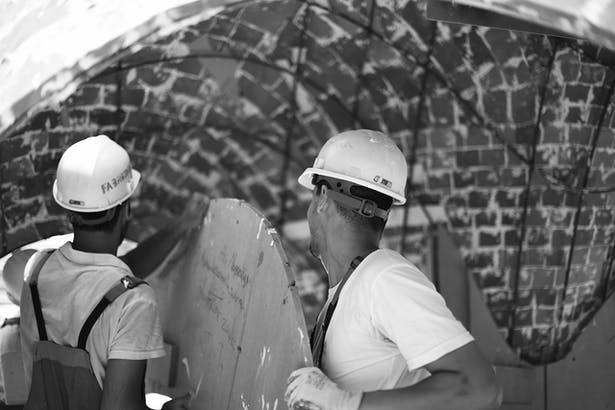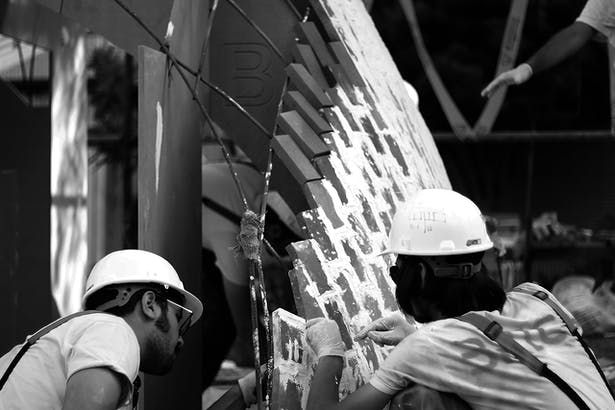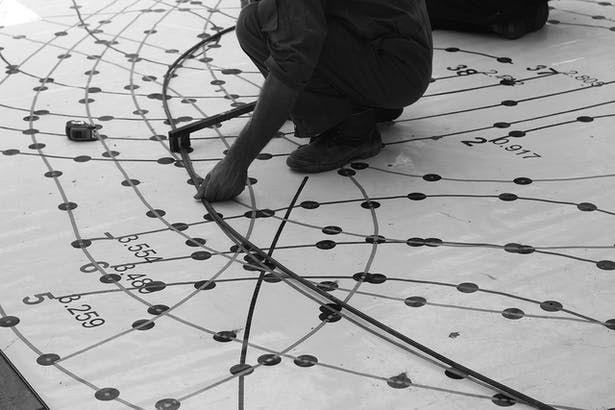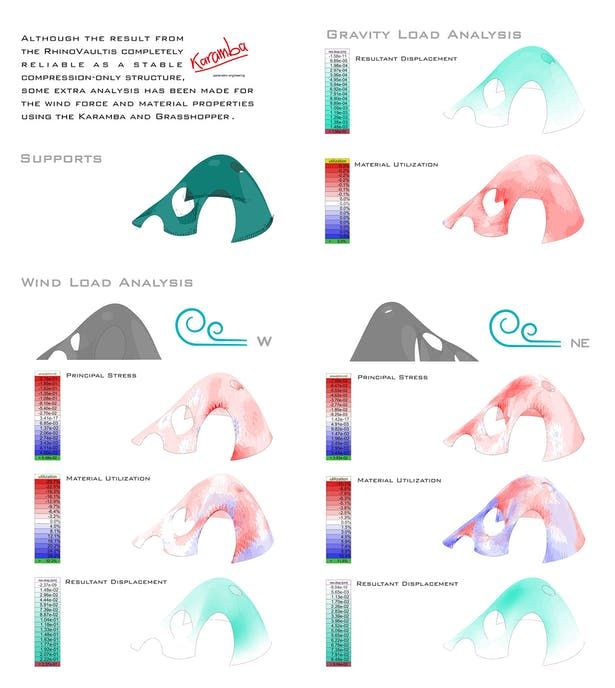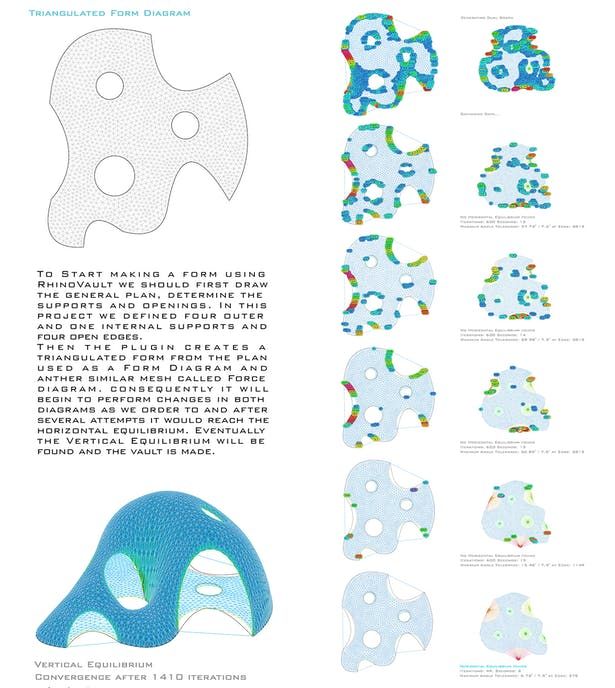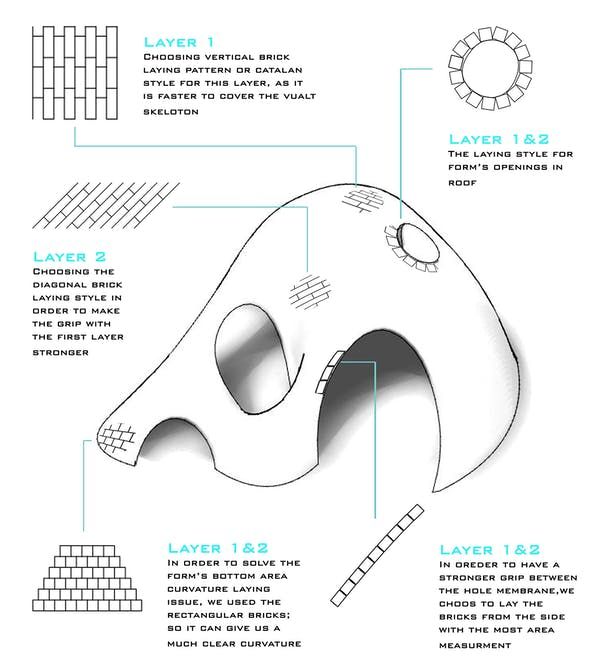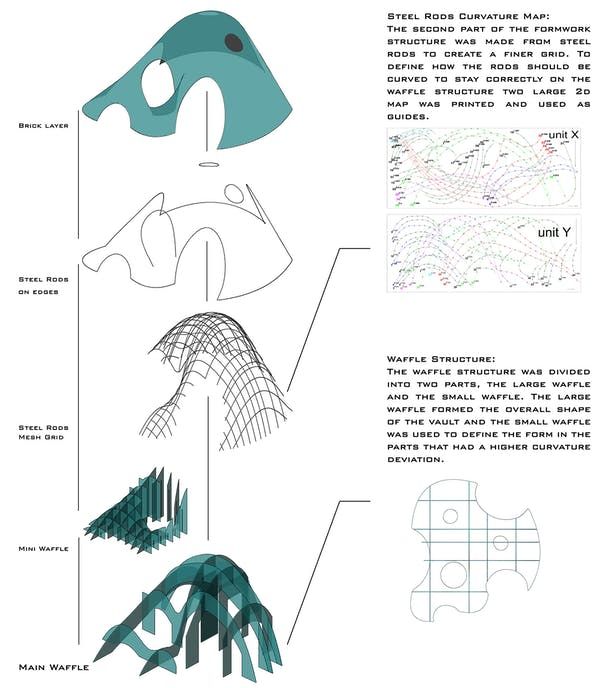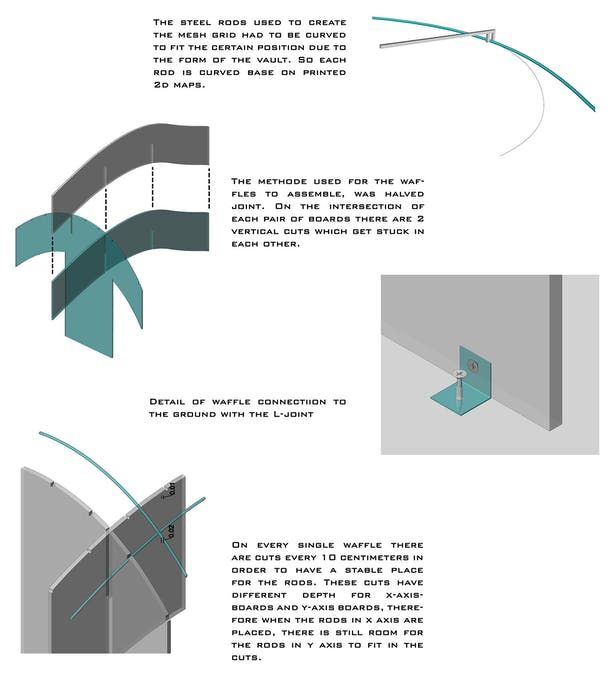The ADAPT is formed by a group of young architects and architecture students looking for innovative and experimental activities in architecture and fabrication. Quiet all members have experiences in computational architecture and digital fabrication workshops taught by masters in this field. Hence, it was the notion for the formation of this group which can initiate independent projects of this matter. Another concern of the group is to cross the prototyping and approach the actual affair of the architecture and structural design. The FaBRICKate is the first project of this group which is an experiment on free-form compression-only vaults that the form-finding process is done using digital tools and programs. The CAMA Circle in Isfahan associated with the group in different fields such as hosting, attracting sponsors, and preparing facilities. The traditional vault and domes which had been built in Iran and the rest of the world using non-tensional materials such as brick and stone have been stable due to the special geometry and symmetry of their plans. With the recent studies on the vaults and compressional structures and upon the help of computers and new programs, it is now possible to design and build stable vaults that are not symmetrical and are called free-form structures. The hanging model is based on the theory of the “reversion of the catenary.” A chain suspended from two points will hang spontaneously in the shape of a so-called “catenary”. Only tension forces can exist in the chain. The form of the catenary upside down gives a perfect shape for an arch of stone masonry, and in such an arch only reversed forces of tension, being compression, will occur.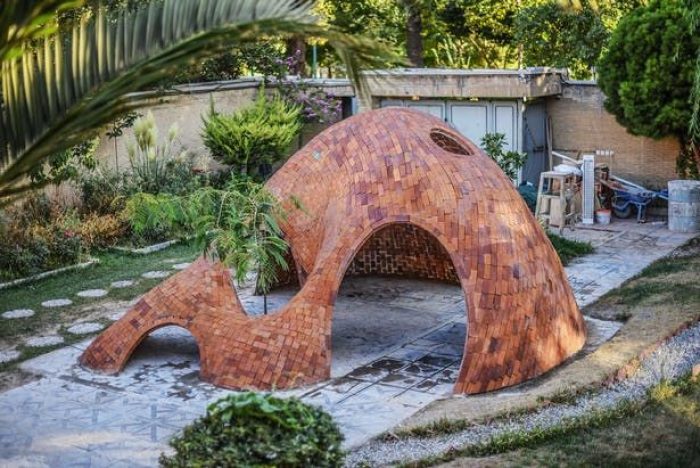
The Rhinoceros® Plug-In RhinoVAULT emerged from current research on structural form-finding using the Thrust-Network-Approach to intuitively create and explore compression-only structures. Using reciprocal diagrams, it provides an intuitive, fast method, adopting the same advantages of techniques such as Graphic Statics, but offering a viable extension to fully three-dimensional problems. The first step after initiation of the official gathering was learning the RhinoVAULT plugin instructed by the ones who had more proficiency in the software. At first, the basic rules about the Thrust network analysis and general commands in the program were tutored. In sequence, the process of designing a vault has been experienced through some examples. After learning general techniques in the program, the team divided into small groups to get more experience in using RhinoVAULT through designing a vault in each group. Different issues should be considered in designing the final form of the vault including the location of the vault, function, optimization of the dimensions, formal aesthetics and etc. Alternatives have been designed for distinct locations of the general site and have been judged from different attitudes and led to picking one ultimate form. The final form was modified several times for considering functional and structural issues and get optimized. Although the result from the RhinoVAULT is completely reliable as a stable compression-only structure, some extra analysis has been made for the wind force and material properties using the Karamba and Grasshopper. Designing the formwork of the structure was a major difficulty in the process of fabrication, A waffle structure was used in combination with a grid mesh from steel rods. The waffle structure was divided into two parts, the main waffle, and the mini waffle. The main waffle formed the overall shape of the vault and the mini waffle was used to define the form in the parts that had a higher curvature deviation. The second part of the formwork structure was made from steel rods to create a finer grid. To define how the rods should be curved to stay correctly on the waffle structure, two large 2d maps were printed and used as guides. To know how exactly the panels should be assembled and the steel grid should be put on the waffle, a scaled model was created and assembled.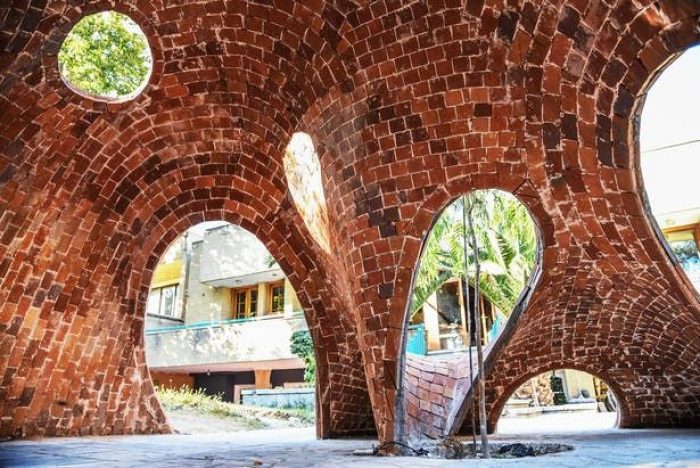
The site which was finally allocated for the vault had to be prepared and leveling of the terrain should be done that the Formwork can be assembled and put on the site. The wood panels in two different thickness for large and small waffles was cut via CNC machines to be ready for assembling. About twenty parts of the main waffle and twenty parts of the mini waffle were assembled in the site in a specific order to create the final formwork. Thirty steel rods in two different axes were curved according to the map and were put on the waffles to complete the formwork. The main part of the whole project was the placement of the bricks which leads to the formation of the vault. The first layer of break laying was started with the ground row and the edges. The bricks could be placed in different ways to form the desired shape. The vertical layout was selected for its more efficiency and quickness. The binder in the first layer was a composition of the concrete adhesive, tile paste adhesive, and gipton plaster. After finishing the first layer the panels of the formwork had to be driven out for better access to beneath the vault. When the decentering of the formwork was done, a thin layer of sealant and a thick layer of cement was applied. Then the second layer of bricklaying was started, for this one the diagonal layout was worked. The composition of cement and stone powder was used as the binder of the second bricklayer. After the completion of the second layer, the steel rods were also removed.
Special Thanks To:
Ali Eslami (Research Advisor), Nahal Sadeghi (Management Support), Javad Rezayi (Bricklaying Expert), Esmaeil Ahmadi (Metal Works), Mohammad Shahruzvand (Metal Works), Karim Mohammadi, Ali Harouni, Amin Lotfi, Mr. Sajjadi, Mr. Heidari, and Mr. Hami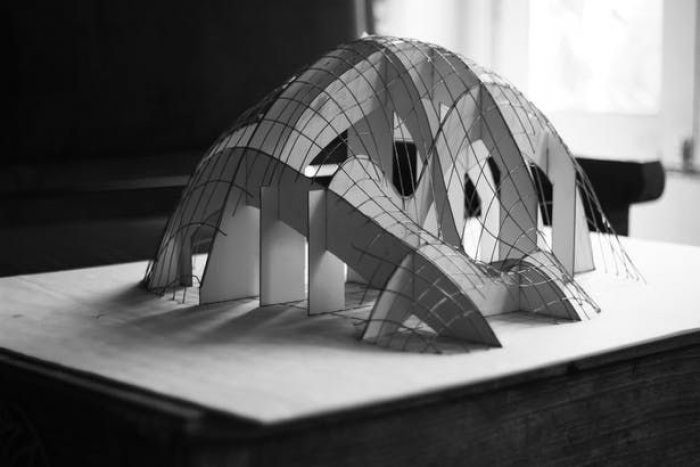
Project Info:
Name: FaBRICKate Project
Location: Isfahan City, Isfahan, Iran
Architect: ADAPT
Date: 2016
Design and Fabrication Team: Erfan Akafzadeh, Soroush Asadi, Mohamad Ahsani, Pooria Baniadam, Amir Bayat, Sara Davoodi, Paniz Farrokhsiar, Mohammad Soroosh Jooshesh, Adib Khaeez, Ali Nosoohiyan, Hasan Shafiei, Niloufar Rahimi
Associate and Host: CAMA Circle
Material: Brick
Area: 16 sqm
Maximum height: 2.65 m
Type: Pavilion, Structure
Sponsors:
-Chideman kavir Co (Financial support)
-Azerakhsh Brick Co (Brick)
-Mohamad Farzadi (Panels, CNC and Metalwork )
-Espada Co ( Brick cleaning)
-masahat.ir (Media)
-Persian holding
Photographs: Mohammad Soroosh Jooshesh, Niloufar Rahimi
